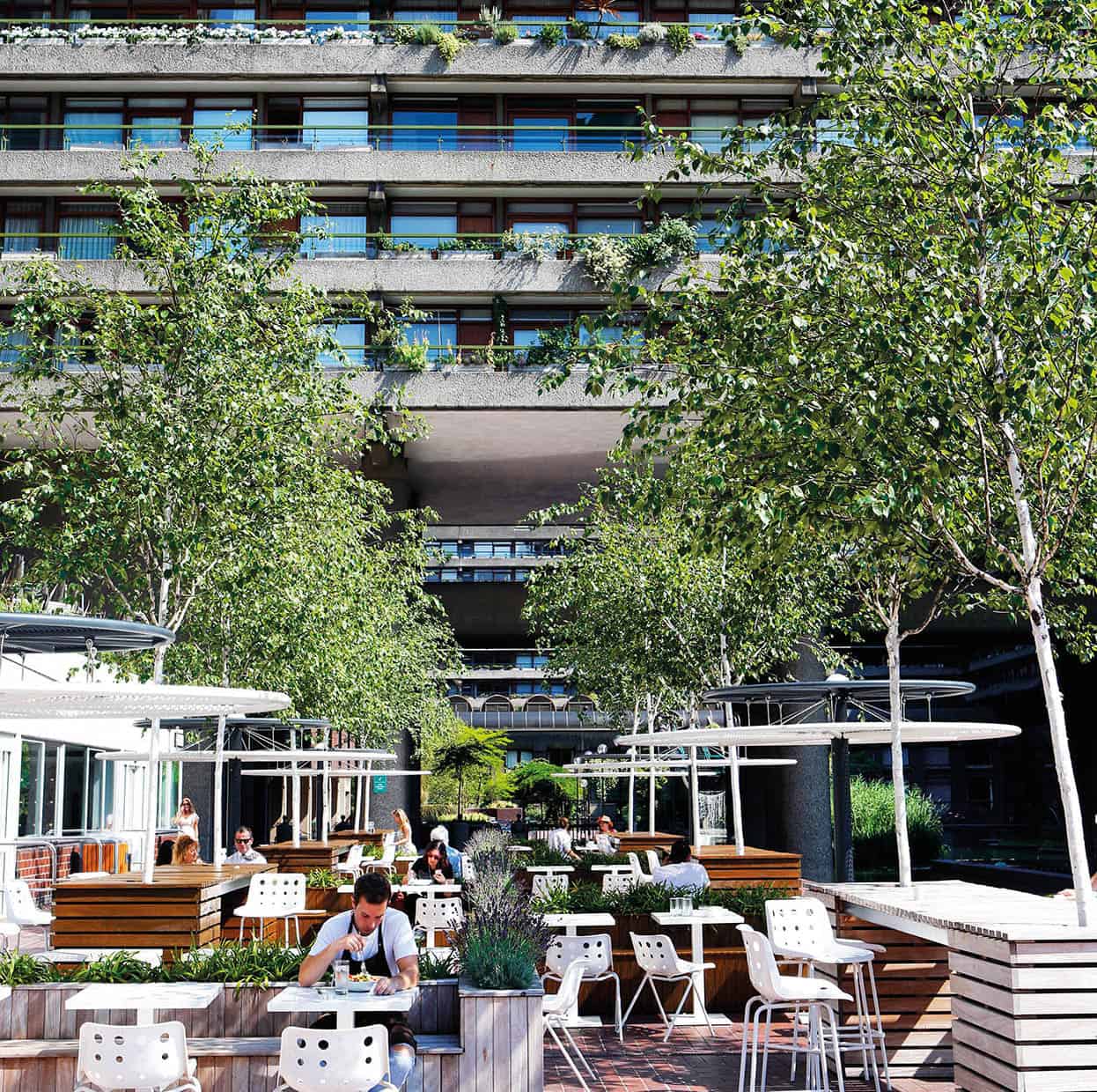
Lydia Evans/Apa Publications
The City, Clerkenwell and Spitalfields

Lydia Evans/Apa Publications
Find religion, revolution and jewels in Clerkenwell Green
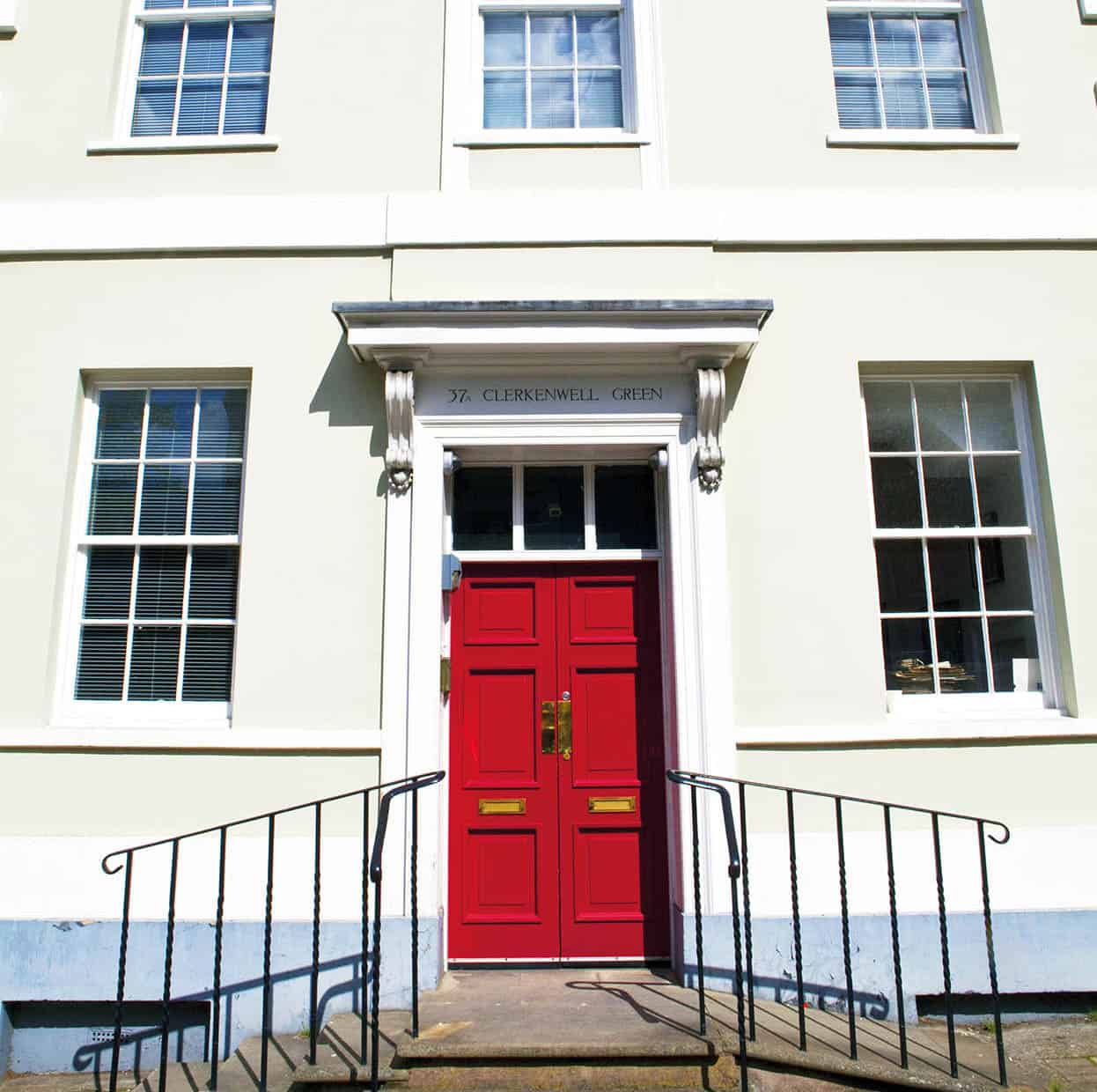
Shutterstock
Clerkenwell Green is a discreet, almost hidden square (which isn’t actually green at all) that incongruously combines ancient knights, foreign revolutionaries and trendy craftspeople. It has been continuously inhabited for centuries. On the northern edge of the green you can still see remnants of the medieval well from which Clerkenwell gets its name, and relics of the 11th-century St John’s church and hospital, just off it on St John’s Lane. The 16th-century Priory of the Knights of St John of Jerusalem that was built to replace that church still stands, and there is a small museum devoted to the history of the Order of St John and the Knights Templars who would gather on Clerkenwell Green before setting off on their crusades. The oldest building currently standing on Clerkenwell Green was built in 1737 as a charity school and now houses the Marx Memorial Library. Marx’s friend Lenin produced a magazine, Iskra, here, and the little room where he laboured has been saved for posterity and is open to the public, as is the library. Tours are held every Tuesday and Thursday at 1pm.
In the 18th century Clerkenwell Green was the centre of the English watchmaking industry, and there are still precision instrument makers and jewellers in the area. Craft Central is a not-for-profit association dedicated to preserving the nature of Clerkenwell and providing cheap workspaces for jewellers, silversmiths and watchmakers. They moved their studio to a couple of streets from Clerkenwell Green, but still have regular open days and ‘Made in Clerkenwell’ exhibitions (check their website for details) across three spaces in Craft Central’s two historic Clerkenwell buildings. The Corner Shop has a new pop-up shop every week, and twice a year Made in Clerkenwell showcases works of the design community.
Marx Memorial Library, 37a Clerkenwell Green; tel: 020 7253 1485; www.marx-memorial-library.org; Mon–Thur 1–6pm; free
Craft Central, 33–35 St John’s Square; www.craftcentral.org.uk
All [map] B5
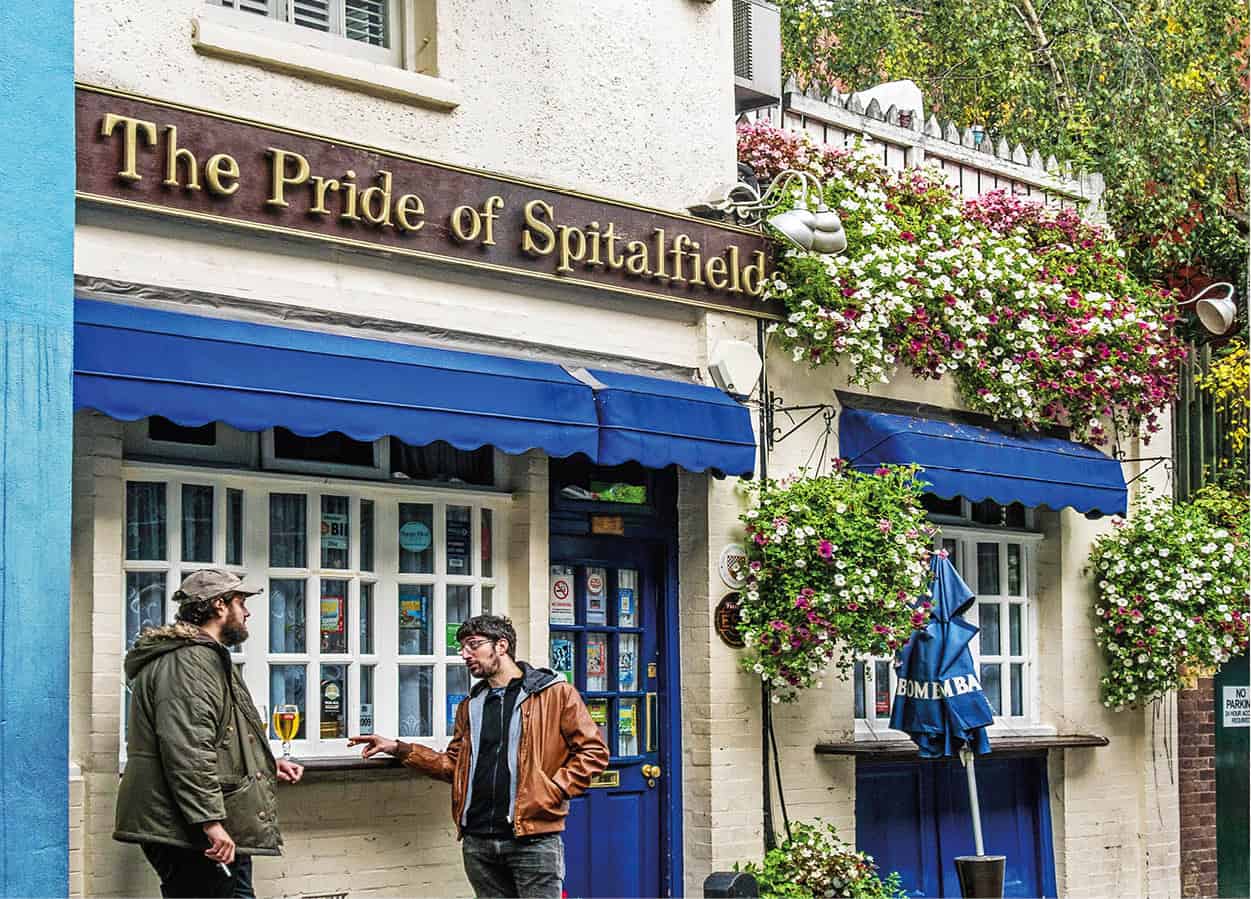
Alamy
It’s no wonder that Monica Ali chose this run-down cobbled East London street as lead character for her 2003 award-winning novel, Brick Lane. It tells quite a story, with its mix of elegant houses built by the Huguenots, synagogues, and sari shops; a tale of successive waves of immigrants and changing fortunes. For most of the last century the only reasons to come here were the large chaotic Sunday Upmarket (vintage clothing and food stalls in the Truman Brewery) or a cheap curry. But since the 1990s, galleries, boutiques, cafés and clubs have been springing up. You’re never short of things to do – whether you’ve come to hunt for vintage treasure (see box) or make a night of it. The area has been gentrified so much in recent years that the property prices are way above the average for the city.
If you’re seeking a snack either side of midnight, try the 24-hour Brick Lane Beigel Bake (159) for warm, filled bagels – salt beef is popular. Café 1001 (91) dishes up breakfast, coffees and beats to E1’s starving artists. Tucked away off Brick Lane, Pride of Spitalfields (3 Heneage St) is a friendly, cosy old-world pub with a resident cat. Dotted along Brick Lane is an increasing number of bijou bars with bottled beer, happy-hour cocktails and fruity sheesha pipes.
The southern end of Brick Lane is still very much ‘Banglatown’, with wall-to-wall curry houses and men trying to beguile you into one. One worth a try is Shampan (79) for fantastic Bangladeshi fish curries. Otherwise head for the legendary Tayyabs (83 Fieldgate St; tel: 020 7247 9543) with its cheap but wonderful smoky grilled meats, dhals and naan breads.
Brick Lane; [map] H3–H5
Vintage boutiques
Dedicated followers of fashion should check out the following: Tatty Devine (236 Brick Lane) for gorgeous cheeky costume jewels; Junky Styling (The Old Truman Brewery, 91 Brick Lane) for customised vintage; The Laden Showroom (103 Brick Lane) for young designers at the cutting edge; Rokit (101 & 107 Brick Lane), possibly London’s biggest collection of vintage; Beyond Retro (Cheshire St, off Brick Lane) – two open-plan rooms in a former dairy with eclectic vintage fashion.
Restaurant-hop your way around London’s last-surviving meat market in Smithfield
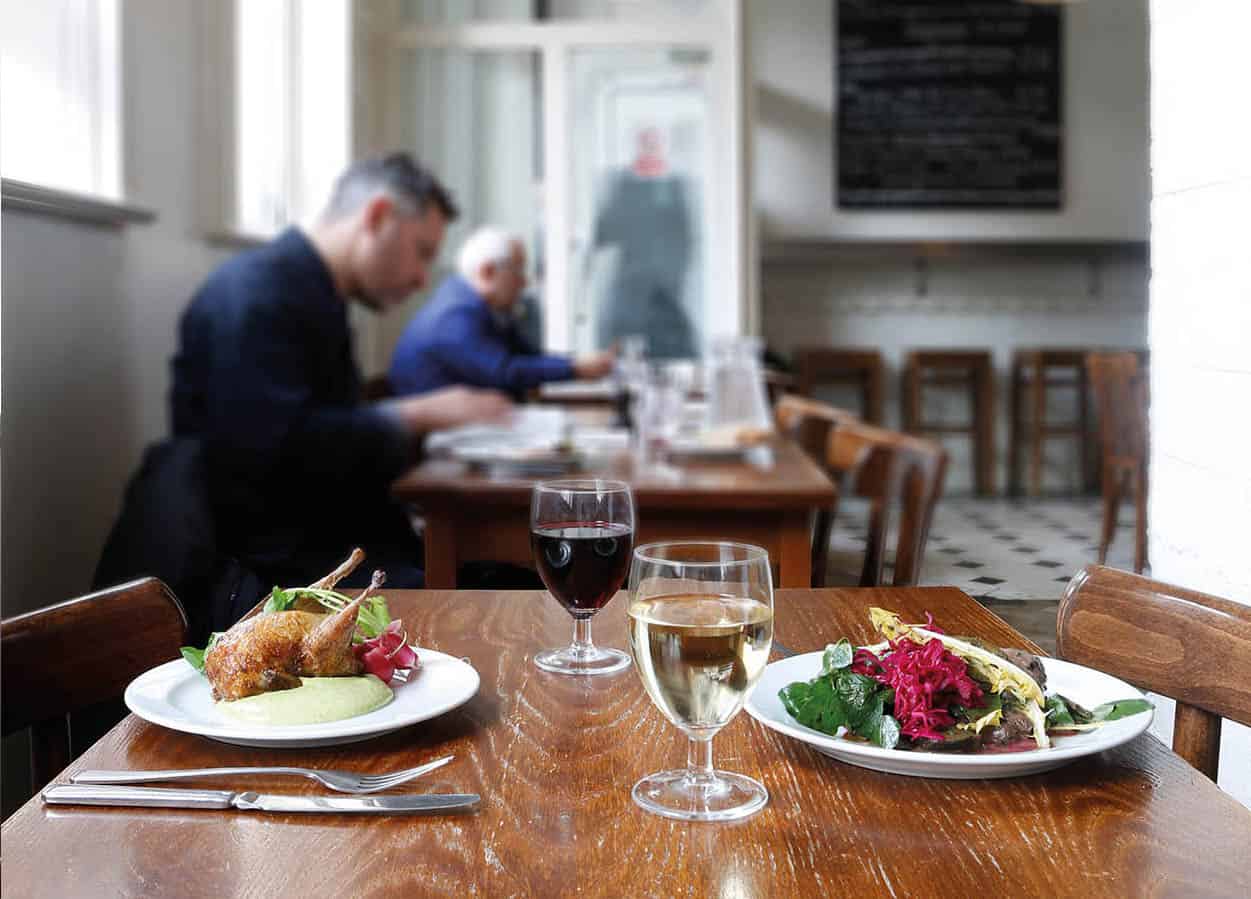
Stefan Johnson
In Oliver Twist, Dickens described Smithfield Market as being ‘ankle deep in filth and mire’, but don’t let this put you off. Smithfield is still a working market, one of London’s oldest, where meat has been bought and sold for over 800 years. However, it has managed to put aside its unseemly reputation for blood and filth and become a restaurant-rich playground for the young and hungry.
St John (26 St John St; tel: 020 7251 0848/4998; pictured) is perhaps the most famous of Smithfield restaurants. Opened in 1994 in a former Georgian smokehouse, it is presided over by Fergus Henderson, whose ‘nose-to-tail eating’ has inspired chefs the world over and has spawned a city of offal lovers. Diners lured by the lavish praise heaped on St John (it has one Michelin star) may be surprised at the extreme modesty of the white-walled surrounds as well as the plainness of the food – the focus is on seasonal British ingredients, and they come simply cooked and presented. The roast bone marrow with parsley is the most famous dish and has quite a following, as does the dessert plate of Eccles cake with Lancashire cheese, but you can also find excellent fish and unusual vegetables. St John Bread and Wine (94–96 Commercial St; tel: 020 7251 0848) is a more relaxed, informal outpost where you can pick up a loaf and a bottle on your way to a picnic or stop in for a bacon sandwich or meal.
Smiths of Smithfield (67–77 Charterhouse St; tel: 020 7251 7950) is on four storeys of a Grade II-listed building, each with a different offering. There’s a buzzing bar with decent pub food on the ground floor where you cannot book so have to dive on a table as soon as it is vacated; a brasserie on the second floor; a lounge on the third; and a restaurant with a wraparound terrace on the fourth where the atmosphere is serene and the star is British beef.
British produce is also the focus at Hix Oyster & Chop House (35–37 Greenhill’s Rents Cowcross St; tel: 020 7017 1930). Overseen by Mark Hix, former chef of the Ivy (for more information, click here), and author of the highly influential recipe book, British Regional Food, it combines no-nonsense dining with occasional flourishes of old-fashioned white-tableclothed and silver-plated British class.
For more a slab of steak than its innards, The Grill on the Market (2–3 West Smithfield; tel: 020 7246 0900) is one of a small national chain. It takes pride in its 28-day aged steak, also fresh fish and seafood that’s smoked on site. Their ‘Best of British’ section on the menu has items such as sirloin aged on the bone, wagyu fillet – the ‘daddy of all steaks’ – and beef burgers with pulled pork topping. Not for the vegetarians among you!
Drink and dine with a view at the top of futuristic skyscrapers
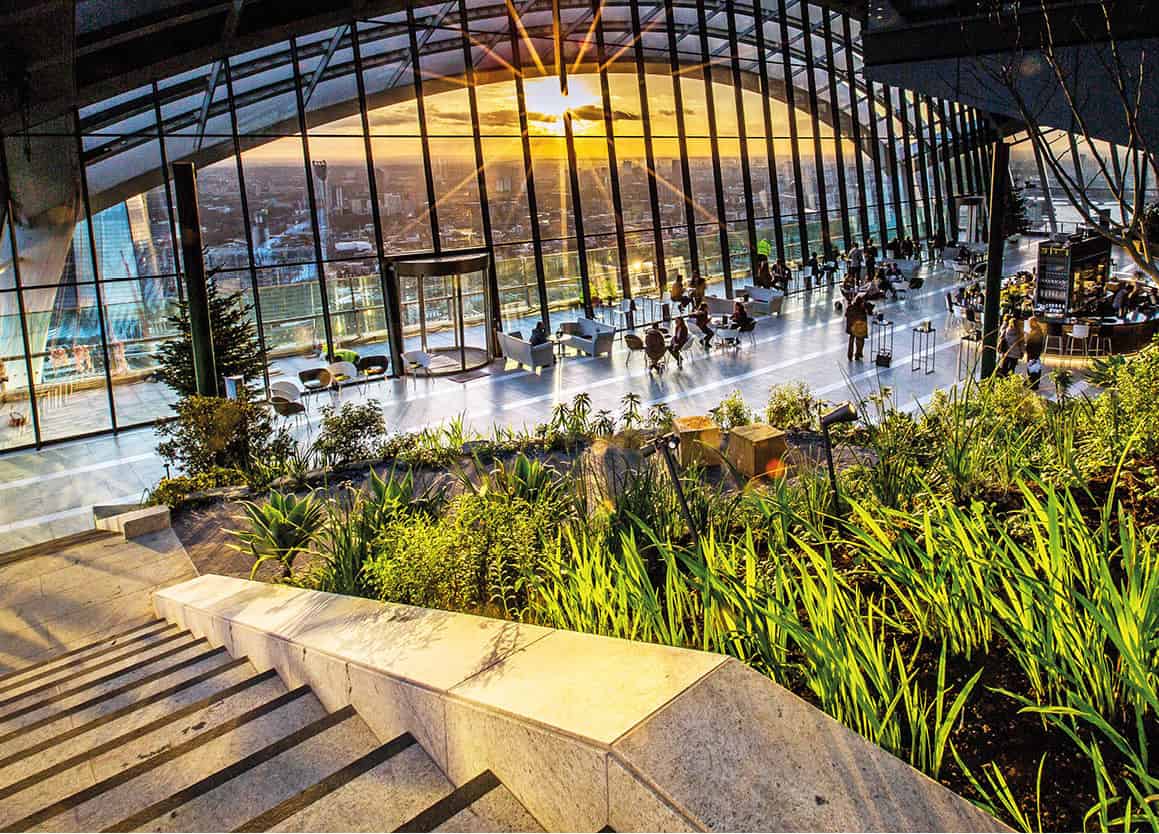
Rhubarb
When a slew of new buildings went up in London, all glistening silver shafts, it provoked a wave of discussion about the architecture and also opened the way for new wining and dining venues. After all, everyone loves a view. London welcomed Heron Tower (110 Bishopsgate; [map] G3) in 2011, at 230 metres/756 ft – the tallest building in the financial district. Its dining venues soon followed, with Duck & Waffle (tel: 020 3640 7310), open 24/7 on the 40th floor with floor-to-ceiling windows to get a real eyeful of the views. Two floors down is Sushisamba (tel: 020 3640 7330) serving an intriguing fusion of Brazilian and Japanese food – although they have a rather snooty dress code (über stylish only).
Drawing a slew of comments – mainly uncomplimentary – regarding its design when it was completed in 2014, the 160-metre-high (525 ft) “Walkie Talkie” (20 Fenchurch St; [map] F2) has concave steel sides; it infamously ‘melted’ a car when the sun’s rays were magnified from it. Don’t worry too much about that when you ascend to the spectacular, glass-domed Sky Garden (tel: 020 7337 2344; pictured) on its 34th floor with viewing platforms, bars and restaurants.
Completed in 1980, and standing at 183 metres (600 ft) high, Tower 42 (25 Old Broad St; [map] F3) – formerly known as NatWest Tower – is a city landmark where you dine at Jason Atherton’s City Social (tel: 020 7877 7703) on the 24th floor; his modern European dishes are superb. Higher up, sup bubbly at Vertigo 42 sky-high champagne bar (tel: 020 7877 7842). Booking is essential – ask for the seats nearest the elevator for the best view.
Want more? Check out the dining options at The Shard for the mother of all views (for more information, click here).
Climb up to the Whispering Gallery and marvel at the magnificence of St Paul’s Cathedral
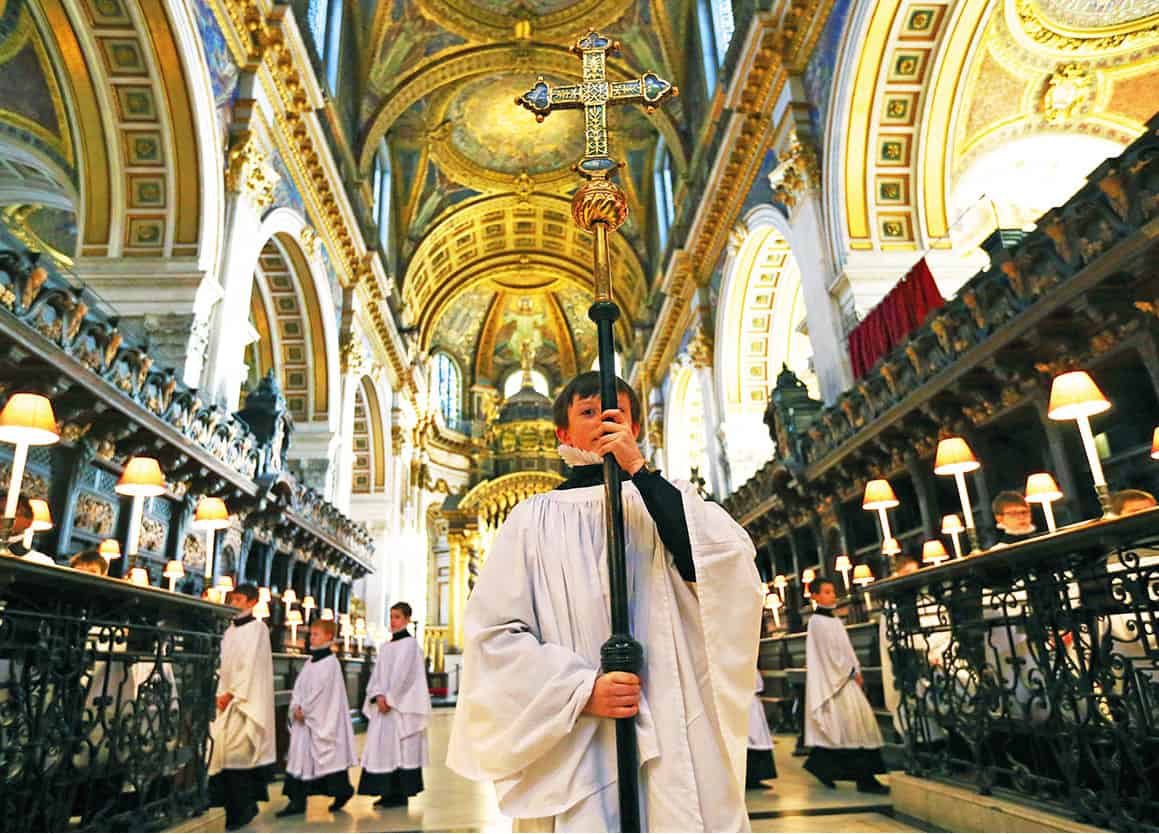
Getty Images
So much of London was lost in the Great Fire of 1666, a shocking few days of devastation. But perhaps one consolation for modern Londoners was the loss of the original St Paul’s Cathedral on this site, because it allowed Sir Christopher Wren to come up with its replacement. He originally devised a scheme considered so radical and overreaching that it had to be toned down. Nevertheless, of the 50 churches he built after the Great Fire, St Paul’s remains his masterpiece. For many years this was London’s tallest building.
Start a visit by going directly to the centre, stand under the dome, and look up, before you head off exploring every nave and cranny. If you plan to climb the dome, do it while you still have the energy. Three hundred steps up a winding staircase later, you emerge into the Whispering Gallery, so called because the faintest whisper can be heard opposite across the huge circle. A further 231 steps up is the golden gallery from which you can see the whole of London laid out like a buffet. A free 90-minute guided tour takes you to the Chapel of St Michael and the quire, areas not usually open to the public.
Try and catch a music recital here; there are regular services with the choir (especially around Christmas and Easter), and a free organ recital (Sunday 4.45pm).
St Paul’s Cathedral, Ludgate Hill; tel: 020 7246 8357; www.stpauls.co.uk; Mon–Sat 8.30am–4.30pm; [map] D3
Work out where the next Picasso or Hirst is coming from at the Whitechapel Gallery
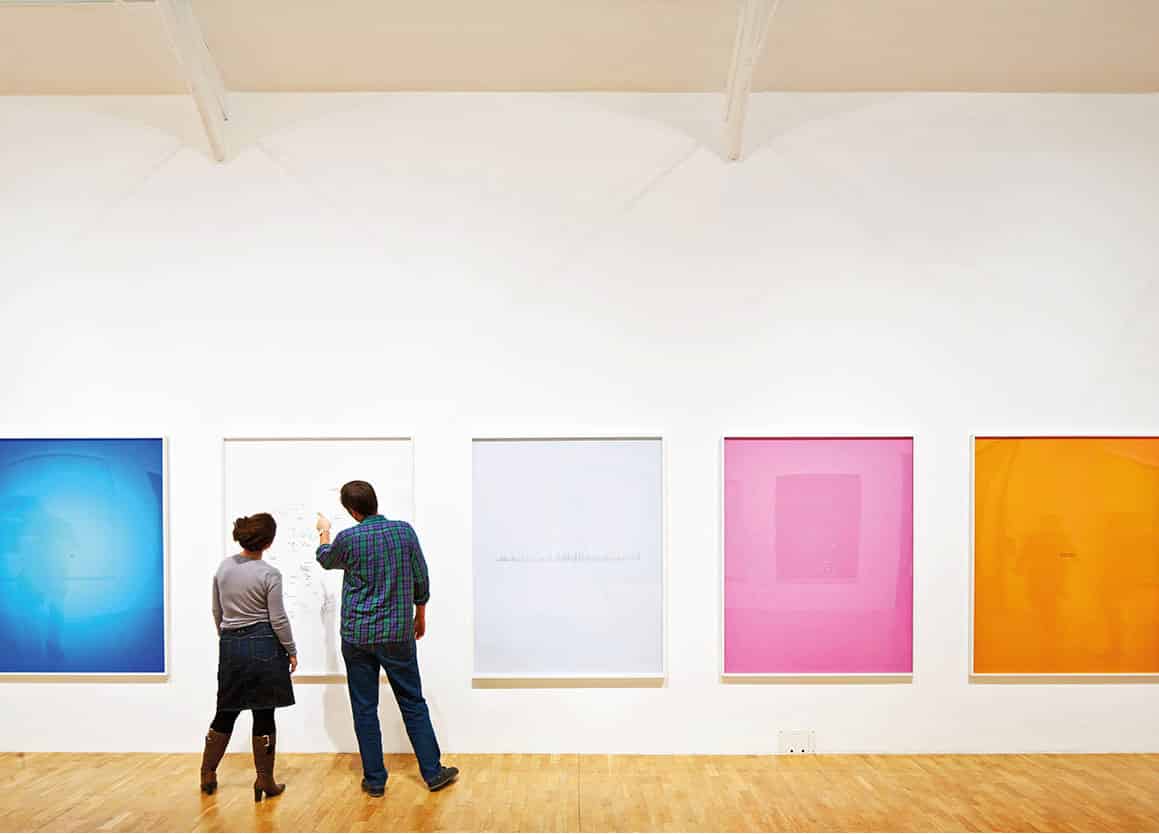
Alamy
The Whitechapel Gallery was founded by young clergyman Samuel Barnet in 1901, who saw it as a way of bringing light to the people of East London and lifting them out of their grinding poverty. It has since made its name with an unerring eye for the best of the avant-garde, and for exhibiting emerging artists from around the world. It hosted Picasso’s scathing anti-war painting Guernica on its world tour in 1939, and in 1956 was the first place to show Pop Art in London. It then went on, over the years, to introduce Jackson Pollock, Mark Rothko, Robert Rauschenberg and Frieda Kahlo to Britain.
Following a £13 million refit, the Whitechapel is now an even more inviting space. At any one time there are several small exhibitions – usually covering a wide range of media – and the ground-floor café bar is a buzzing place to meet (it has free WiFi, so there are usually a few laptops around). The gallery also organises First Thursdays (the first Thursday of each month), where around 150 East London galleries hold free events, exhibitions and talks for a special late opening.
Whitechapel Gallery, 77–82 Whitechapel High St; tel: 020 7552 7888; www.whitechapelgallery.org; Tue–Sun 11am–6pm, Thur until 9pm; free; [map] H3
First Thursdays
Check these East London galleries for First Thursday events: Space Studio (129–131 Mare St; 020 8525 4330) for multimedia exhibitions and talks; Rivington Place (Rivington Place; 020 7749 1240), the global diversity of art; Raven Row (56 Artillery Lane), a non-profit contemporary art space in an 18th-century building and Waterside Contemporary (2 Clunbury St; 020 3417 0159) hosts a diverse crow-section of art events.
Take refreshment in the 11th-century crypt of Sir Christopher Wren’s St Mary-Le-Bow
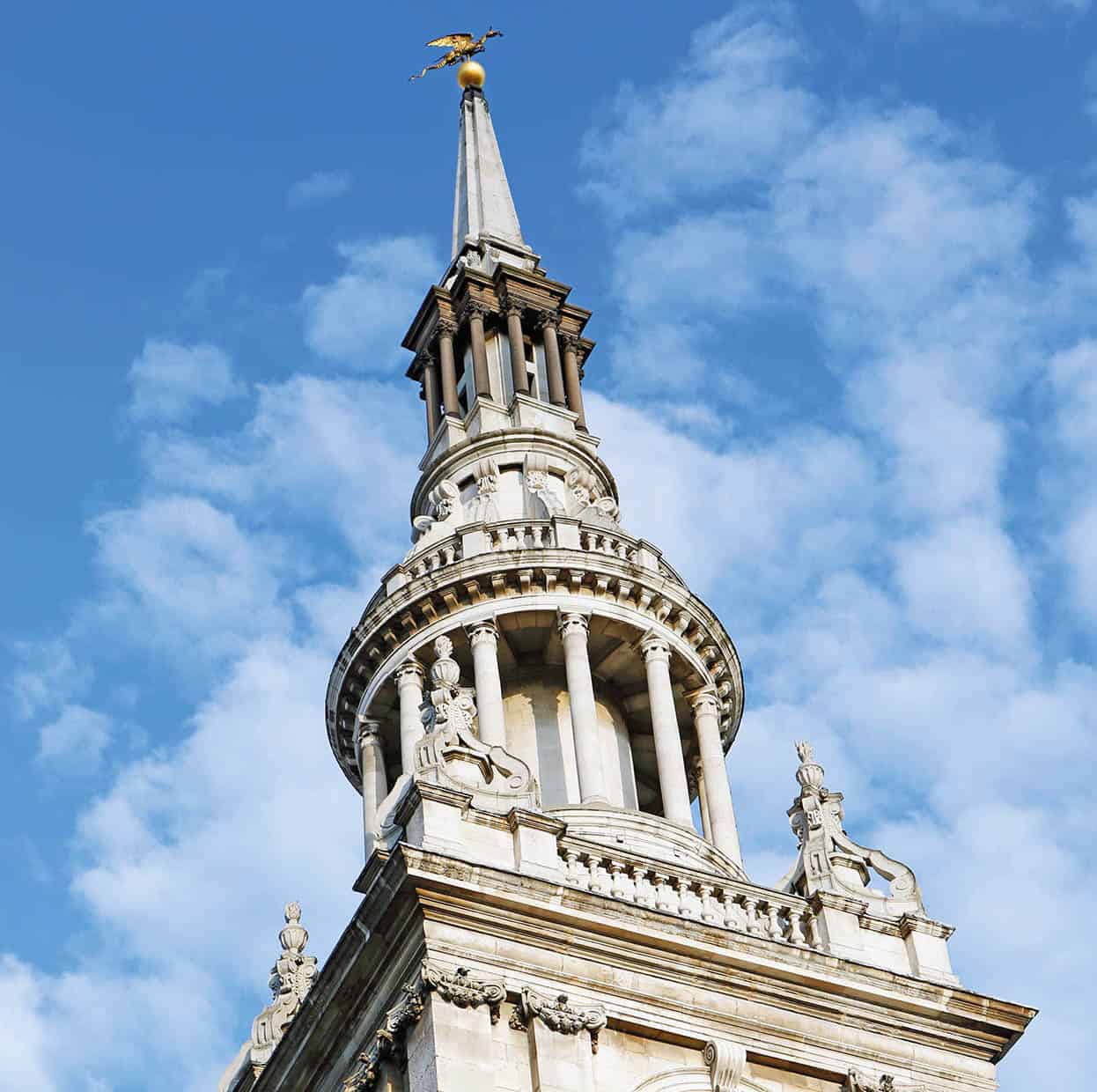
Lydia Evans/Apa Publications
This beautiful little church has the Great Bells of Bow which, according to the popular nursery rhyme Oranges and Lemons, say ‘I do not know’ to the bells of Stepney’s question ‘Pray when will that be?’. They are also the bells that, if you are born within earshot of them, define you as a cockney or a true Londoner. The Bow Bells crashed to the ground when the church was bombed during the Blitz, but have since been restored on high without any damage to their lovely sound. But there is more to St Mary-Le-Bow than bells, for it is also a beautiful place to sit and reflect. Sir Christopher Wren based his design on Rome’s Basilica of Maxentius, and apart from the elaborate bell tower it has a restrained elegance unusual in his churches. Another very good reason to visit is The Café Below, in the crypt, which has delicious daily dishes, from a breakfast of brioche French toast with bacon, to pan-fried sea bass with clams for dinner. Everything is made from organic local sources.
And if that puts pep in your step, you might want to consider the 311 steps at the nearby Monument. Another creation of Sir Christopher Wren, he built this in the 1670s to commemorate the loss of buildings and life caused by the Great Fire. A climb up this beautiful, simple Doric pillar richly rewards you with a breathtaking view illustrating just how the city has regenerated itself since the days of London’s Burning. Oh, and you get a certificate for your troubles.
St Mary-Le-Bow, Cheapside; tel: 020 7248 5139; www.stmarylebow.co.uk
The Place Below; tel: 020 7329 0789; www.cafebelow.co.uk; 7.30am–9pm; [map] D3
The Monument, Fish Street Hill; www.themonument.info; daily 9.30am–5.30pm; [map] F2
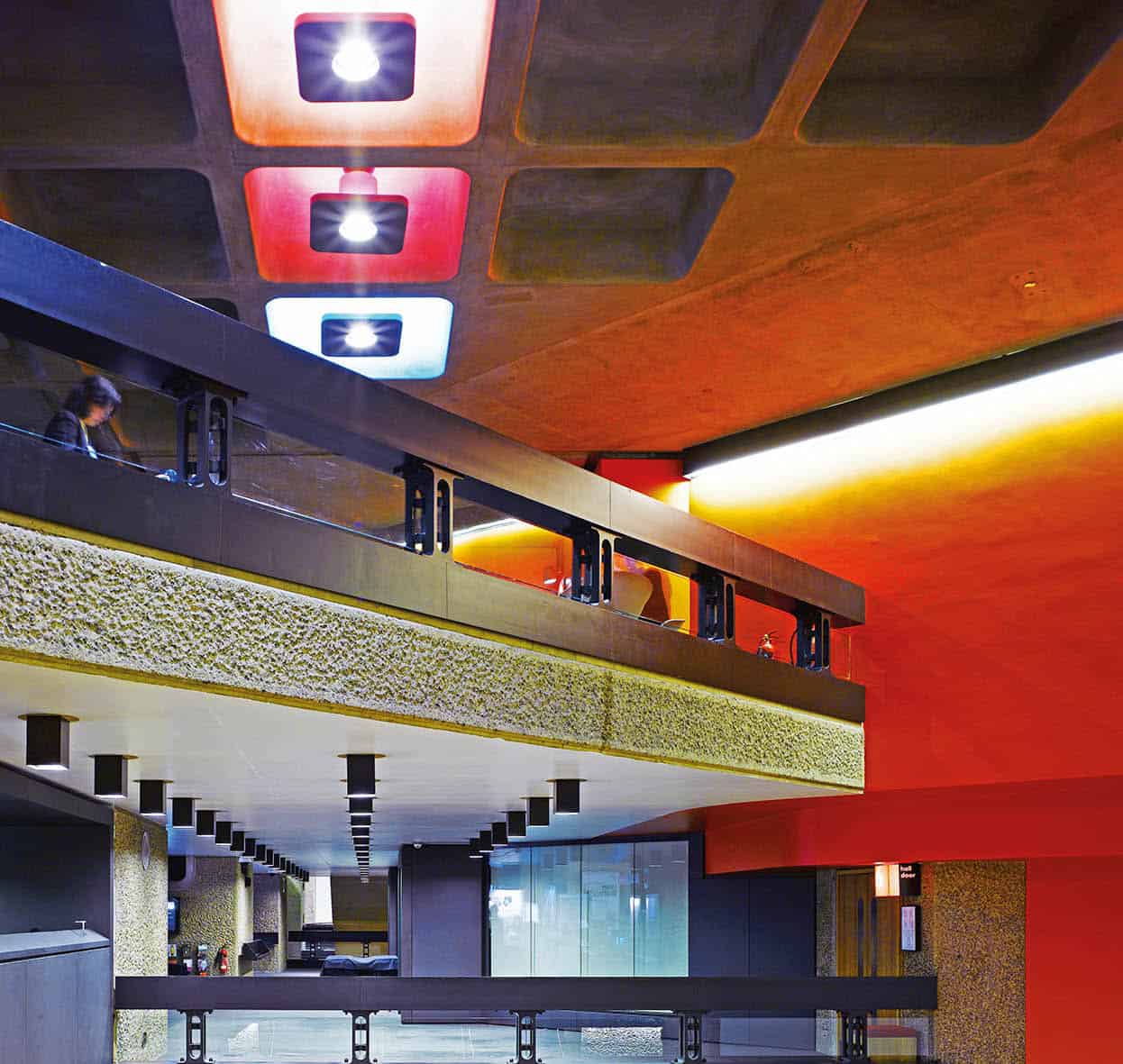
Getty Images
The running joke about the Barbican Centre has been that as big as it is – and it is the largest arts centre in Europe – you could never find it. The vast concrete complex was built on a gaping site that had been bombed in World War II. Despite numerous design problems, it is still Britain’s finest example of Brutalist concrete architecture, unrivalled for its scale. At the heart of a residential complex comprising 2,000 flats, the Barbican arts centre is a cultural cornucopia, including two art galleries, two theatres for contemporary drama and dance, cinema showing arthouse films, library and the London Symphony Orchestra. Its music programme is one of the highlights, with interesting series of musicians in unusual genres. There are often free foyer gigs also.
There is a wide range of venues for wining and dining, including a Martini bar, Italian ‘bistronomy’ restaurant Osteria, and Bonfire, for burgers and shakes. The lakeside terrace is a great place to take your drink, among the fountains, waterbirds and greenery.
The Barbican Centre, Silk Street; tel: 020 7638 8891; www.barbican.org.uk; [map] D4
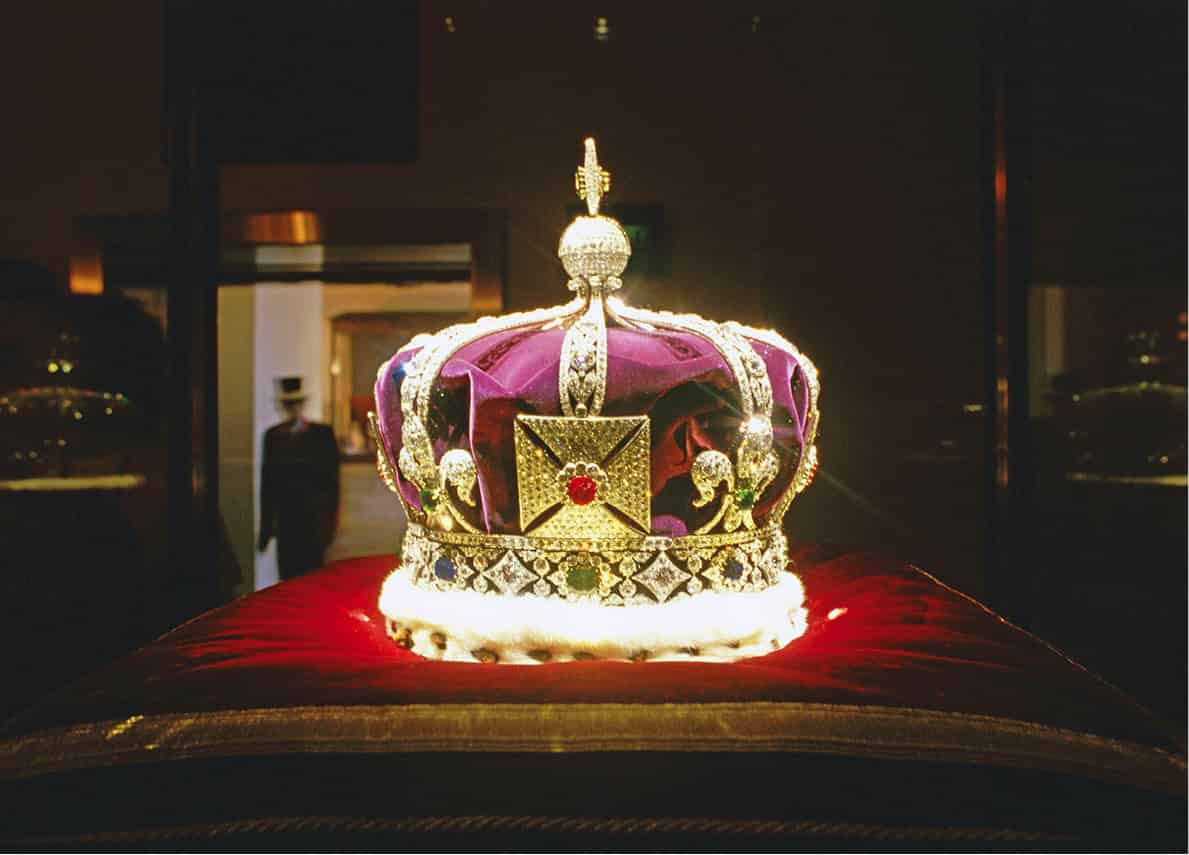
SuperStock
When William the Conqueror began building his white stone tower in the middle of his London fortress in the 1070s, he wanted it not only to dominate the London skyline, but also the hearts and minds of his subjects. Even ruthless, ambitious William would be amazed at how successful he has been in this. Nearly a thousand years later the White Tower still stands proud and is one of London’s World Heritage Sites. The tower has been seriously overshadowed by towers of a completely different kind all around it, but it continues to speak eloquently of Britain’s history to the two million people a year who walk its halls.
The Armoury Room showing the knights and horses in their shining suits of armour is really awe-inspiring, as is St John’s Chapel – one of the best-preserved Anglo-Norman churches in Britain. However, most people come to the Tower of London to gawp at The Crown Jewels – all the tiaras, crowns, orbs and sceptres owned and sported by British royalty for the past 700 years are twinkling away on display here. Crowd speed is ‘controlled’ by a slow-moving walkway that edges you past without anyone blocking the view. Another treat is the view over the ramparts to the River Thames from the East Wall walk. Watch out for the Royal Ravens; legend has it that, if they ever leave, the tower will crumble. You can also book ahead for the nightly Ceremony of the Keys (check website for details).
For refreshment, seek out the New Armouries Café, near Lanthorne tower, with ingredients sourced from London’s food markets.
Tower of London, Tower Hill; tel: 020 3166 6000; www.hrp.org.uk/TowerOfLondon; Tue–Sat 9am–5.30pm, Sun–Mon 10am–5.30pm; charge; [map] G1
Dig deep into the city’s archaeological layers at the Museum of London
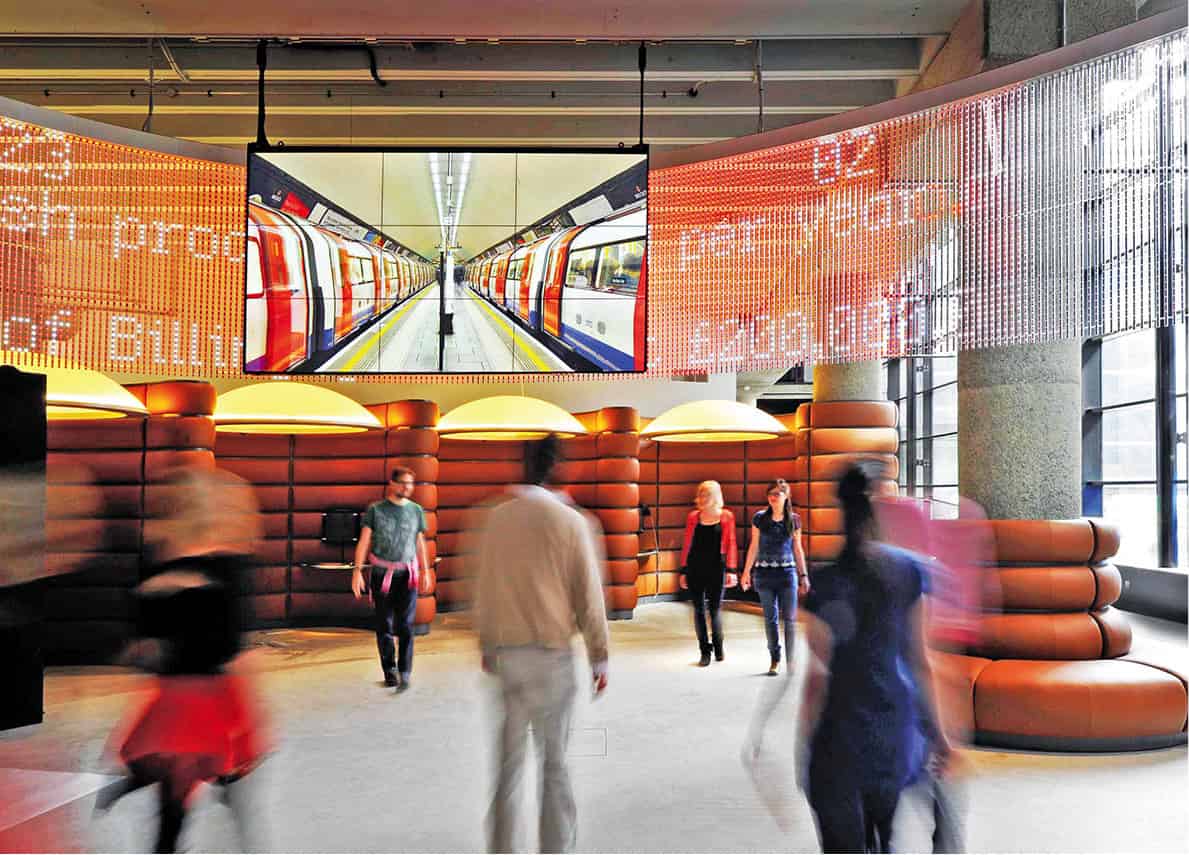
Museum of London
London is not just a big city with a long history, it is an intensely complicated and multi-layered place; it comprises peoples from all over the world living in villages joined together into a huge metropolis, and affected in varying ways by centuries of history. Nowhere is this more apparent than in the basement galleries of the Museum of London, which aim to tell the tumultuous, dramatic story of London and its people from 1665 to the present day. It is a story of constantly being knocked down and picking itself up again; of destruction and reinvention such as that brought about by the plague, or the Great Fire or the Blitz.
A 240-year-old printing press spills news stories across the gallery ceiling in a clever collision of new and old technologies. And all the while you are walking over glass cases holding the city’s archaeology underfoot. There is all the glamour of the theatre (lots of lavish costumes) and commerce (an amazing Art Deco lift that once raised shoppers in Selfridges) but this is counterbalanced by a room filled with the voices of London’s dispossessed so you can also take in the meaning of a life of poverty in the shadows of one of the richest cities in the world. To take you really up to the minute, there is an innovative multimedia piece, LDN24, screened on a 160ft elliptical LED screen that explores a 24-hour cycle of London life with 35 live feeds following the pulse of the city. There’s also an interactive installation comprised of a constantly changing collage of hundreds of photographs submitted by Londoners.
Museum of London, London Wall; tel: 020 7001 9844; www.museumoflondon.org.uk; daily 10am–6pm, free; [map] D4
Bag anything from a piece of contemporary art to chic vintage clothing to a tasty pie at Spitalfields
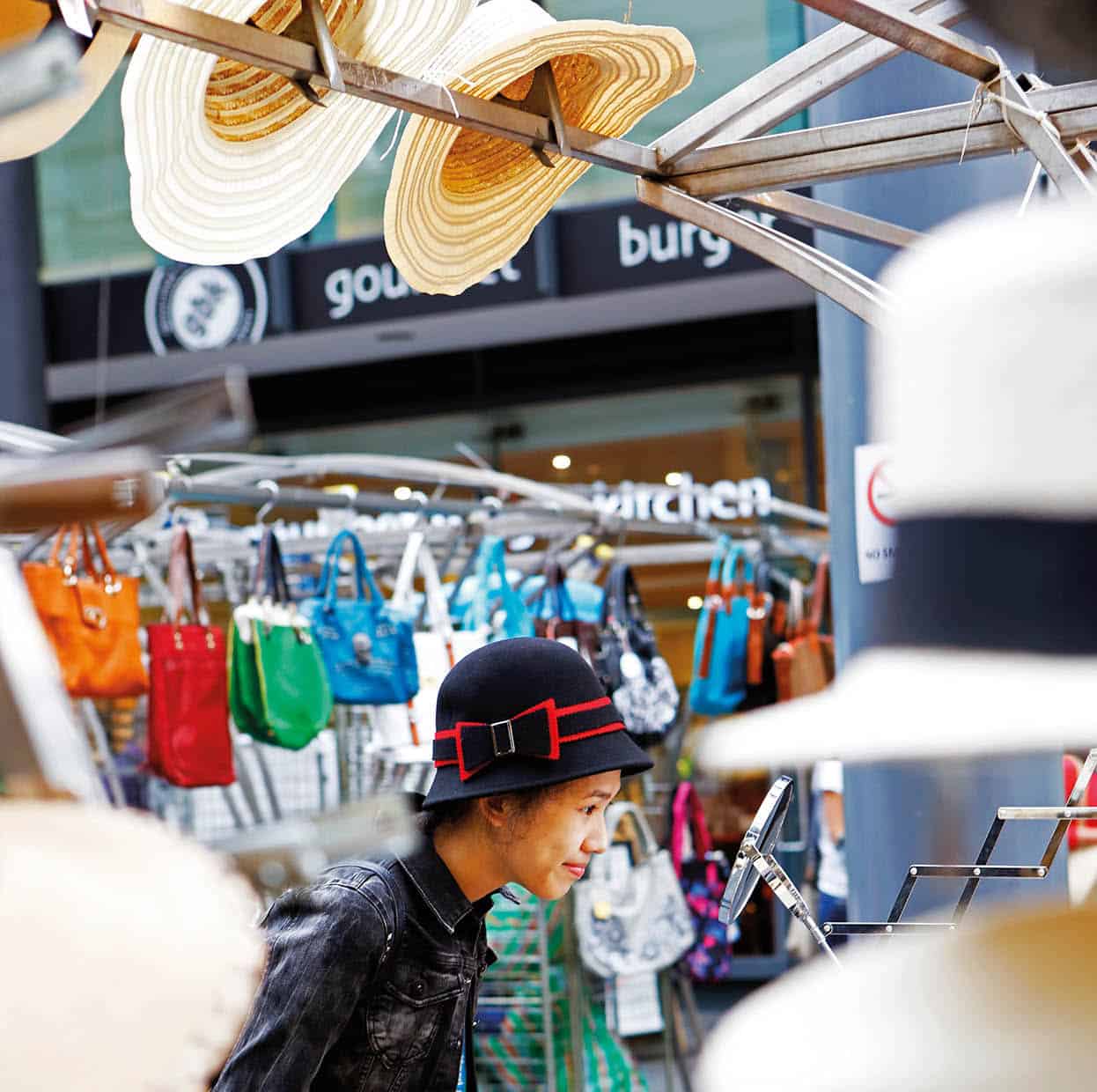
Lydia Evans/Apa Publications
The East End’s Sunday markets
Brick Lane: hundreds of stallholders selling a glorious muddle of bric-a-brac and desirable objets d’arts. [map] H3–H5
Up Market: indoor market at the Old Truman Brewery with vintage galore, music and crafts. [map] H4
Petticoat Lane: Middlesex Street; cheap clothes and accessories and Asian fabrics. [map] G3
Columbia Road: flowers, plants and all gardeners’ delights plus cool cafés and boutique shops. [map] F4
The shops inside Spitalfields Market are open all week, and now stalls are there daily also, with a huge variety of cutting-edge fashion, original artwork, homeware and food. Still regarded as a showcase for up-and-coming young artists from the nearby art and design college, the market has lots of vintage, retro and modern original clothes. It is also very strong on jewellery and has stalls selling every style of human adornment you can imagine. It gets busy for its Saturday Style Market, with around 90 independent designers. Look out for the Arts Market, held Thur–Sun twice a month. Whenever you come, Spitalfields is chock-full of good things to eat and global flavours. Some are open daily and some are ‘pop ups’ – try reliable chains such as Carluccio’s and Itsu, or independent eateries like Hao Chii for fusion Asian, and the Duck Truck for roast duck wraps and Scotch eggs (duck eggs, of course).
Opposite the market is Christ Church Spitalfields by Nicholas Hawksmoor, Sir Christopher Wren’s most talented pupil, second only to him as architect of the city’s finest churches. Its restored crypt is now open to the public, and there are regular tours.
Spitalfields, 65 Brushfield Street; tel: 020 7377 1496; www.spitalfields.co.uk
Christ Church Spitalfields, Commercial St; www.ccspitalfields.org; [map] G4
Time travel to the 18th and 19th centuries in the remarkable Dennis Severs House
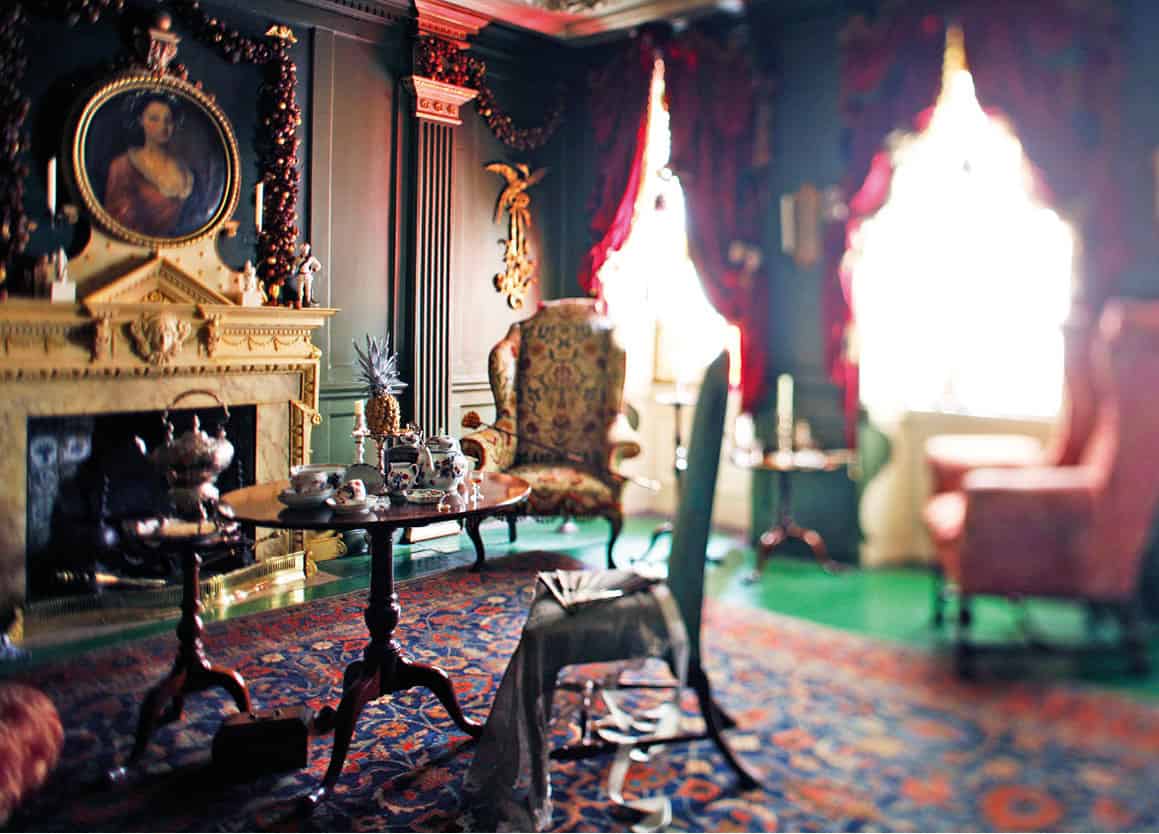
Ming Tang-Evans/Apa Publications
London is full of historic house museums dedicated to their former owners – the Dickens, Handel, Sir John Soane museums – which recreate a moment in time and tell a story. But none of them transports you back the way Dennis Severs House does. The minute you walk into this remarkable house, inhabited by wealthy Huguenot silk weavers from 1724 until 1919 (by which time the silk trade was dying and they were no longer wealthy), your senses are bombarded – cold, dark, unfamiliar smells and faintly spooky sounds – and you are immersed in a real physical sense of the past. Severs, who died in 1991, wanted people to walk around his house in silence so that they could fully absorb the atmosphere, and there are still signs hand-painted by him with his motto, ‘You either see it or you don’t’, in each of the 11 rooms on four storeys. These take you through the five generations of one family, the fictional Jervises, and from the Enlightenment with its strong bright colour schemes on the ground floor to the outbreak of World War I in the attic rooms. A truly remarkable experience (evening and daytime tours; booking required).
Dennis Severs House, 18 Folgate St; tel: 020 7247 4013; www.dennissevershouse.co.uk; [map] G4
A glittering bar and glimmering shops at The Royal Exchange
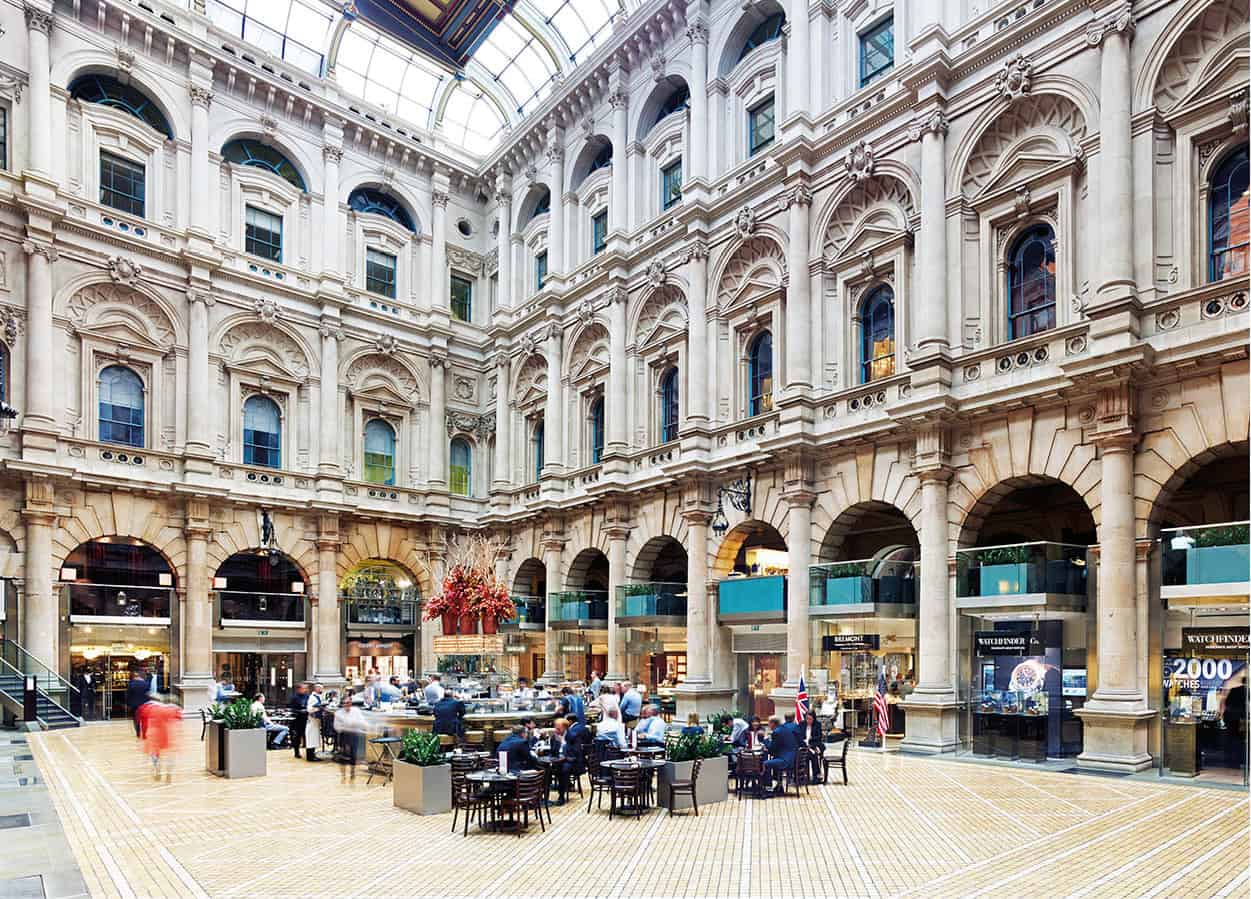
The Royal Exchange
During the 17th century, stockbrokers were not allowed in The Royal Exchange due to their ‘rude manners’. Nowadays it is open to all as, since 2001, it was reinvented as a luxury shopping mall full of bijoux boutiques wrapped around the smart brasserie at its centre. Which is very apt as this grand, Grade I-listed building has always been a temple to London’s wealth. In the centre of the soaring atrium is the Grand Café, a gleaming bar and crustacea bar, but the best tables are on the first-floor gallery overlooking the action. The plush shops at The Royal Exchange are mostly devoted to jewels, fashion and fragrance with Tiffany, Smythson, Tateossian and Bulgari; Jo Malone, Gucci, Hermès, Paul Smith and Lulu Guinness – it’s rather like a mini version of Bond Street without traffic or rain to contend with.
If you want to fit yourself out like one of those ‘rude’ stockbrokers, try Church’s which has all the accessories a City gent requires, starting with hand-crafted leather shoes. And to nosh like one, try Threadneedle Bar’s (tel: 020 7618 2480) signature cocktails and vintage champagne, along with rock oysters and soft shell crab.
The Royal Exchange (where Cornhill and Threadneedle St meet); www.theroyalexchange.co.uk; store: 10am–6pm, restaurants and bars: 8am–11pm; [map] F3